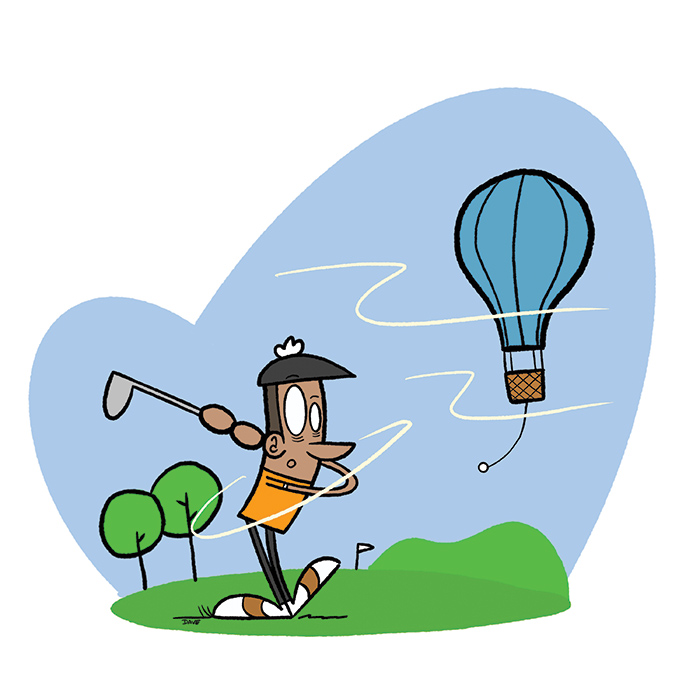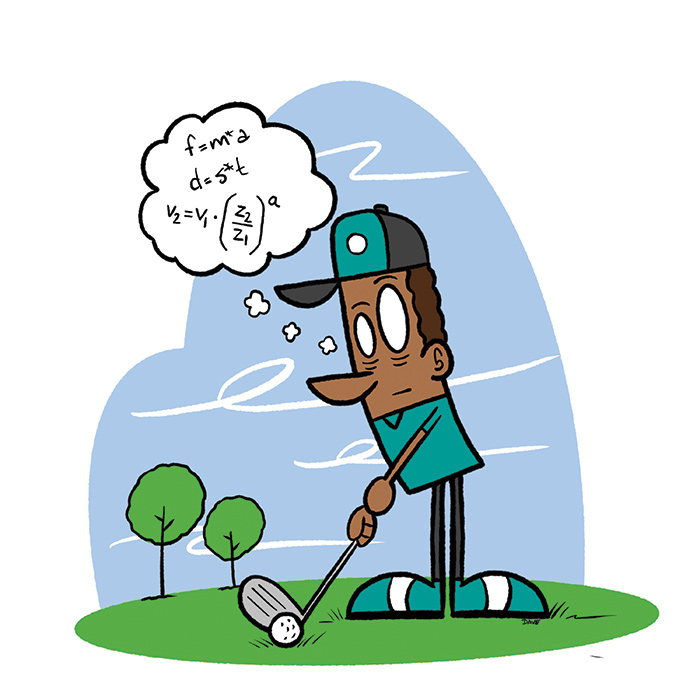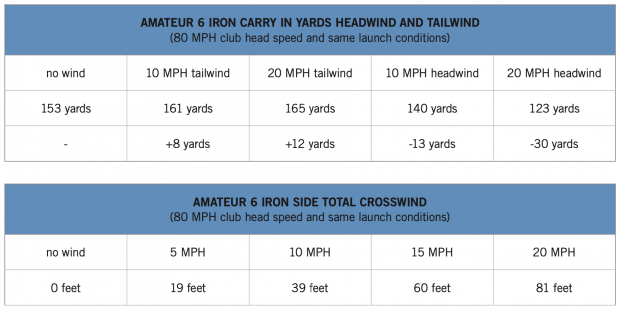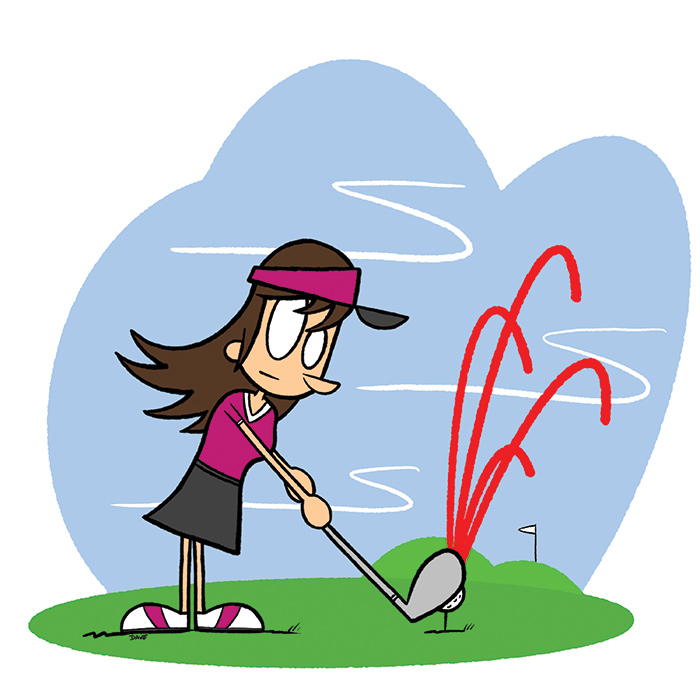Drive Away Hunger Golf Classic 2025
Join Community Table on August 25 at Fossil Trace Golf Club

DID YOU KNOW that a headwind hurts more than tailwind helps—up to twice as much? If you are calculating the same amount for your golf shots, into and down wind, you may want to reconsider! In my years of teaching, I have found golfers tend to underestimate the effect of the wind, be it head-, tail- or crosswind.
In calm conditions, the air moves into the ball at the same speed the ball is traveling. In a headwind, the ball flies higher and lands steeper due to lift and drag. Lift makes the ball rise and drag makes it slow down.
The faster the airflow, the greater amount of lift and drag, making shots balloon when hitting into the wind. A common misconception is that the ball spins more when hit into a headwind, that it’s the extra lift from the added airflow that makes the ball fly higher. In reality, in a headwind, spin is the enemy! Swinging harder is not the answer, as more clubhead speed will most likely create more spin. Using a club with less loft can optimize conditions by reducing spin loft and spin. On the flip side, a tailwind with too little spin will cause ball to fly lower and land flatter. Ideally in a tailwind, launching it higher is beneficial to get more spin, loft and the ball will land steeper.
Headwind hurts more than a tailwind as lift and drag do not behave linearly. This why a headwind hurts more than a tailwind helps. In the charts on the following pages, you can see how differently headwinds and tailwinds impact the golf ball’s flight and distance.

A great rule to use is to add 1% for every 1 MPH of headwind. The following distances would change like this:
100-yard shot into a 5 MPH headwind = 105 yards 200-yard shot into a 5 MPH headwind = 210 yards
100-yard shot into a 10 MPH headwind = 110 yards 200-yard shot into a 10 MPH headwind = 220 yards
100-yard shot into a 20 MPH headwind = 120 yards 200-yard shot into a 20 MPH headwind = 240 yards
100-yard shot into a 30 MPH headwind = 130 yards 200-yard shot into a 30 MPH headwind = 260 yards
When playing downwind, use 0.5% instead, so judging your distance in the wind would look a bit like this:
100-yard shot with a 5 MPH tailwind = 98 yards 200-yard shot with a 5 MPH tailwind = 195 yards
100-yard shot with a 10 MPH tailwind = 95 yards 200-yard shot with a 10 MPH tailwind = 190 yards
100-yard shot with a 20 MPH tailwind = 90 yards 200-yard shot with a 20 MPH tailwind = 180 yards
100-yard shot with a 30 MPH tailwind = 85 yards 200-yard shot with a 30 MPH tailwind = 170 yards

Club choice:
• Take one or more clubs longer depending on the wind’s MPH.
• Longer clubs have less loft and will help you keep the ball lower and prevent less lift and drag.
• Most golfers try to swing hard into the wind. Take plenty of club and swing smoothly; this will
also keep you from swinging at your fastest club head speed and creating more spin, which as noted above is what you’re trying to avoid.
Technique changes:
• Ball position–play the ball back in your stance a little of your normal ball position.
• Keep more pressure forward (on your target side foot) at address and in swing.
• You can try a shorter backswing as it will also create less speed. If so, take more club. • Finishing in a lower position will help decrease loft at impact.
• Visualize low!

Club Choice:
• Take one or more less clubs depending on the MPH.
• The shorter clubs will give you more loft to hit it higher and prevent the wind from knocking it
down more.
• Take a full swing to create more club speed which add launch and spin.
Technique Changes:
• Ball position–Move the ball forward in your stance of your normal ball position.
• You need speed–do not be afraid to swing at it, of course in good balance!
• Finish high–improve the angle of your club face at impact to add more loft and assist the ball
in flying higher.
• Visualize high!
This article was also featured in the May Issue of Colorado AvidGolfer.
Colorado AvidGolfer is the state’s leading resource for golf and the lifestyle that surrounds it, publishing eight issues annually and proudly delivering daily content via coloradoavidgolfer.com.
Follow us on Twitter, Facebook and Instagram.
Join Community Table on August 25 at Fossil Trace Golf Club
Steamboat Springs is like a secret only you and your friends know
Vail Valley is home to an endless array of summer outdoor pursuits